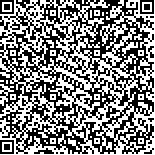| 摘要: |
| [摘要] 目的 探讨恒牙列骨性Ⅱ类错(牙合)拔牙矫治后牙弓形态、颊廊及侧貌的变化情况及其相关性,为骨性Ⅱ类错(牙合)拔牙矫治提供参考。方法 选取2013-01~2017-12在广西壮族自治区人民医院口腔正畸科接受拔牙矫治的恒牙列骨性Ⅱ类错(牙合)患者15例,应用X线头影测量技术分析矫治前后患者牙颌颅面结构变化,游标卡尺测量矫治前后上颌模型牙弓长度、宽度的变化,Adobe Photoshop CS6软件测量分析矫治前后患者正面微笑像变化。分析矫治前后颅颌牙面软硬组织,牙弓宽度、长度以及正面微笑像颊廊相关指标的变化情况及相关性。结果 矫治后,患者SNA角、ANB角、U1-NA角、UL-E和LL-E较治疗前降低,NLA角较治疗前增加,差异有统计学意义(P<0.05);上颌牙弓中段宽度(UPP)、上颌牙弓后段长度(UPD)、上颌牙弓后段宽度(UMM)和上牙弓全段长度(UAD+UPD)指标均减小,与治疗前比较差异有统计学意义(P<0.05)。与治疗前比较,矫治后正面微笑像口角宽度(Ch to Ch)、正面微笑像颊廊宽度之和(BC)及正面微笑像双侧颊廊比率(BCR)水平增加,正面微笑像上颌可见牙列宽度(Va to Va)水平降低,但治疗前后比较差异均无统计学意义(P>0.05)。Pearson相关分析结果显示,UPP变化与BC和BCR变化呈负相关(P<0.05);UAD+UPD变化与UL-E变化呈正相关(P<0.05);Ch to Ch变化与U1-NA和UL-E变化呈负相关(P<0.05);BC变化与SNB角呈正相关(P<0.05)。结论 骨性Ⅱ类错(牙合)拔牙矫治后牙弓长度变化与侧貌凸度改善密切相关,牙弓中段宽度减少可能会引起正面微笑时颊廊增加。 |
| 关键词: 骨性Ⅱ类错(牙合) 拔牙矫治 牙弓形态 颊廊 |
| DOI:10.3969/j.issn.1674-3806.2021.01.13 |
| 分类号:R 783.5 |
| 基金项目:广西医疗卫生适宜技术研究与开发项目(编号:桂卫S 201315-01) |
|
| Study on the correlation between extraction treatment and the changes in dental arch form, buccal corridor and facial profile in patients with skeletal class Ⅱ malocclusion |
|
TU Zi-duan, ZHOU Yan, FANG Zhi-xin, et al.
|
|
Department of Stomatology, the First People′s Hospital of Changde City, Hunan 415000, China
|
| Abstract: |
| [Abstract] Objective To study the correlation between extraction treatment and the changes in dental arch form, buccal corridor and facial profile in patients with skeletal class Ⅱ malocclusion of permanent dentition, and to provide reference for the extraction treatment of skeletal class Ⅱ malocclusion. Methods Fifteen patients with permanent dentition type skeletal class Ⅱ malocclusion who underwent extraction treatment in the Department of Orthodontics, the People′s Hospital of Guangxi Zhuang Autonomous Region from January 2013 to December 2017 were selected. The changes of the dental-maxillary craniofacial structures were analyzed by X-ray cephalometry. Vernier calipers were used to measure the changes of arch length and width of the maxillary model before and after extraction treatment. Adobe Photoshop CS6 software was used to measure and analyze the changes of frontal face image of the patients with smiling faces before and after extraction treatment. The changes in relevant indicators of craniomaxillofacial soft and hard tissues, width and length of the dental arch and buccal corridors of frontal face image of the patients with smiling faces and their correlation were analyzed before and after extraction treatment. Results The SNA angle, ANB angle, U1-NA angle, UL-E and LL-E of the patients after extraction treatment were significantly decreased compared with those before treatment. The NLA angle of the patients after extraction treatment was significantly increased compared with that before treatment(P<0.05). Compared with those before treatment, the maxillary interpremolar width(UPP), maxillary posterior segment arch dental length(UPD), maxillary intermolar width(UMM), and maxillary total segment arch dental length(UAD+UPD) were all significantly reduced after treatment(P<0.05). Compared with those before treatment, the width of the bilateral cheilion on front smiling face(Ch to Ch), the sum of width of buccal corridor(BC) on front smiling face and the buccal corridor ratio(BCR) were increased, and the width level of visible dentition in maxilla(Va to Va) was decreased after treatment, but there were no significant differences in these indicators between prior-treatment and post-treatment(P>0.05). Pearson correlation analysis showed that the changes of UPP were negatively correlated with the changes of BC and BCR(P<0.05); the changes of UAD+UPD were positively correlated with the changes of UL-E(P<0.05); the changes of Ch to Ch were negatively correlated with the changes of U1-NA and UL- E(P<0.05); the changes of BC were positively correlated with SNB angle(P<0.05). Conclusion After extraction treatment of skeletal class Ⅱ malocclusion, the changes of dental arch length are closely related to the improvement of profile convexity. A decrease in the dental mid-arch width may result in an increase in the buccal corridor of a patient with a frontal smile. |
| Key words: Skeletal class Ⅱ malocclusion Extraction treatment Arch form Buccal corridor |

